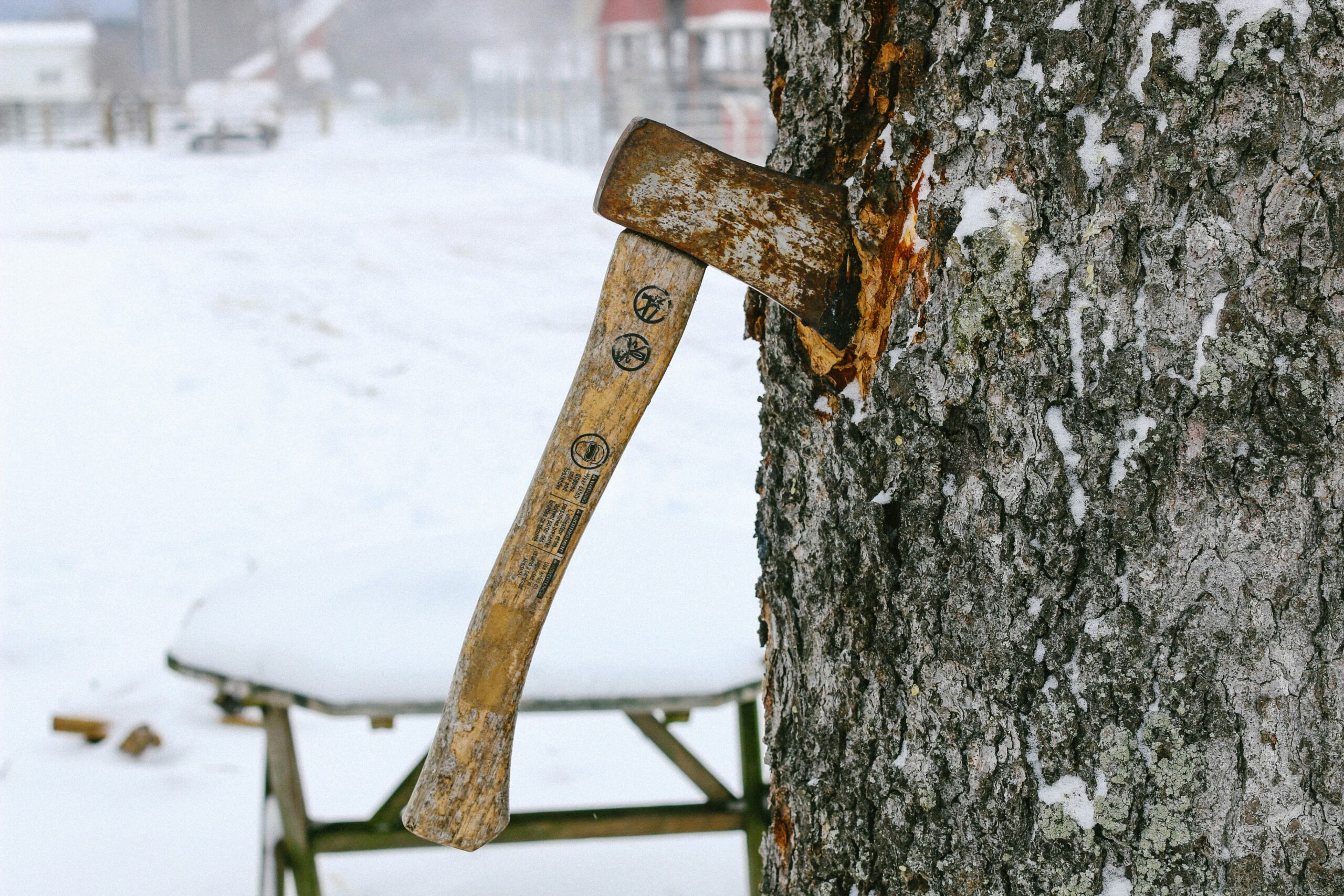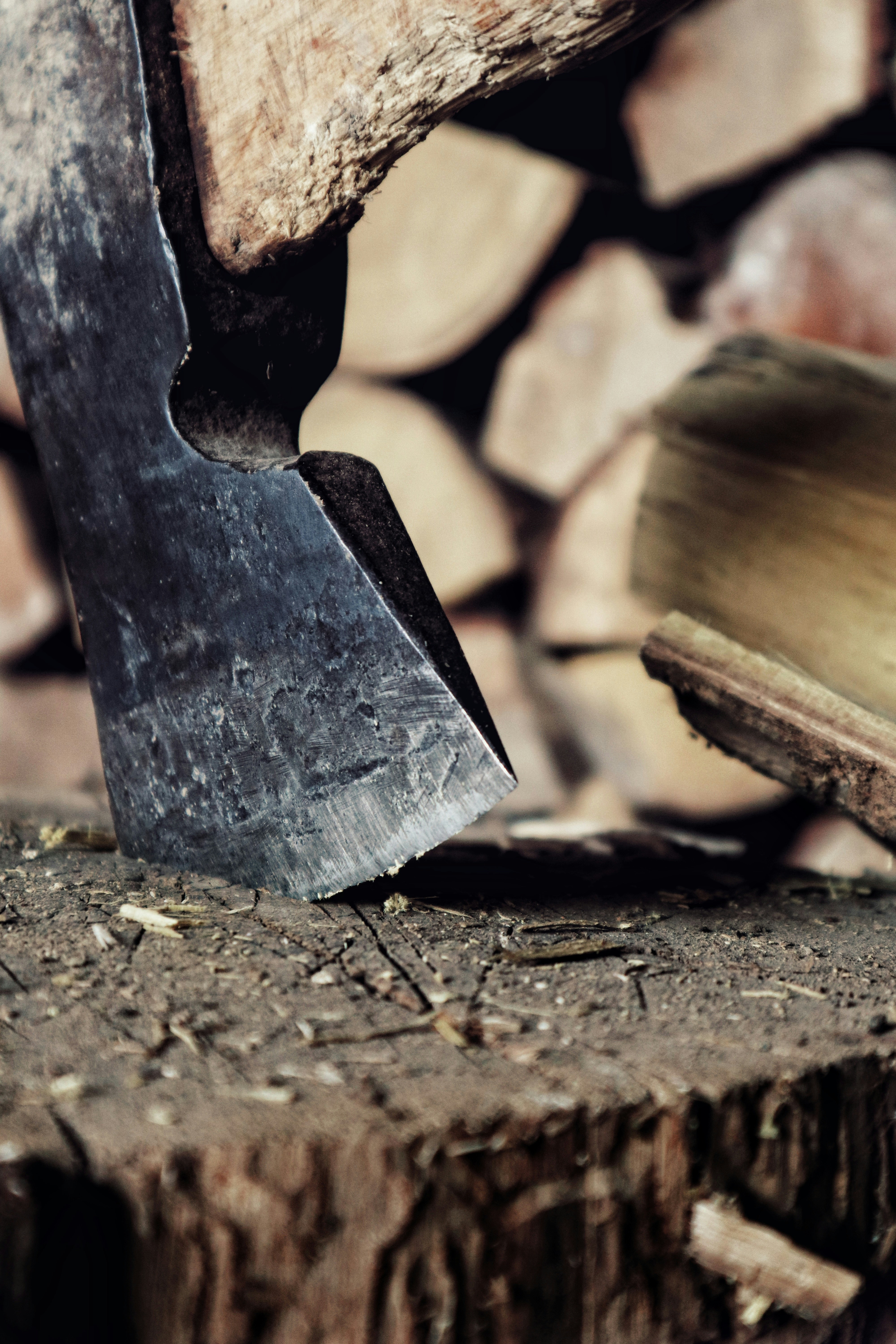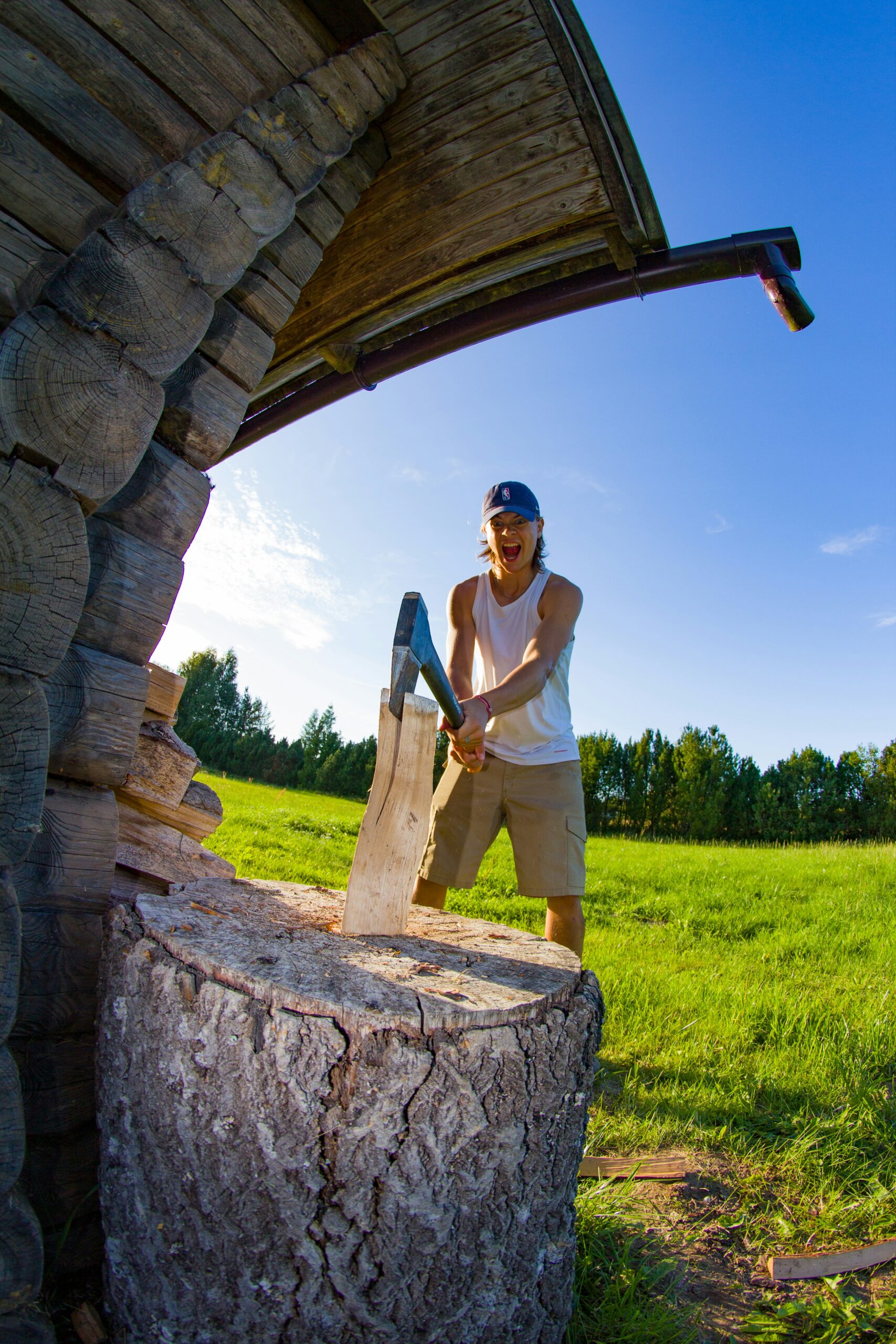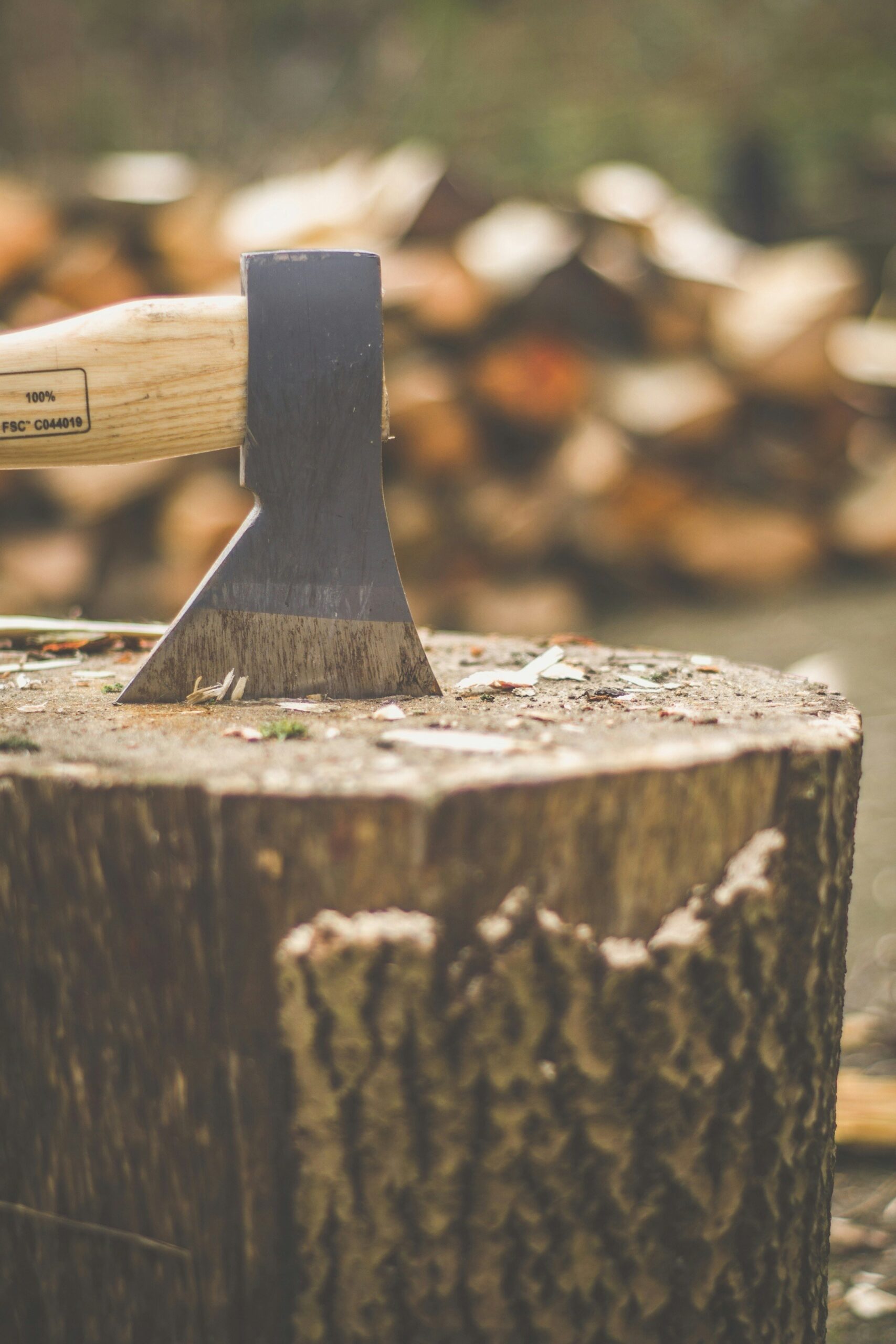Axe throwing is thrilling, but safety is paramount for beginners. This guide covers essential safety gear, proper handling techniques, and important rules to follow. By the end, you’ll understand how to set up a safe environment, avoid common mistakes, and enjoy axe throwing responsibly. Whether trying it for the first time or looking to improve your safety practices, this guide will help you throw axes with confidence and caution.
Key Takeaways
- Always wear proper safety gear, including closed-toe shoes and eye protection when axe-throwing
- Inspect axes and targets before each throw to ensure they are secure and undamaged
- Maintain a clear throwing zone and communicate effectively with other throwers to prevent accidents
- Focus on proper technique and control rather than power when learning to throw axes
- Choose appropriate throwing conditions and avoid distractions to ensure a safe axe-throwing experience
Understanding the Basics of Axe Throwing

Mastering axe-throwing safety begins with understanding the basics. This section covers choosing the right axe, familiarizing yourself with axe parts, warming up properly, learning fundamental stances, and practicing safe throws. These essential skills form the foundation for a safe and enjoyable axe-throwing experience.
Choosing the Right Axe for Your Skill Level
Selecting an appropriate axe is crucial for beginners to ensure safety and success in axe throwing. Novices should start with lighter axes, typically weighing between 1.5 and 2 pounds, which are easier to handle and control. The axe head should be securely fastened to the handle, and the blade should be sharp but not dangerous. Beginners should avoid axes with longer handles until they master basic throwing techniques.
Familiarizing Yourself With Axe Parts and Terminology
Understanding the parts of an axe is essential for safe and effective throwing. The main components include the head, handle, and blade. The head is the metal part at the top, the handle provides grip and leverage, and the blade is the sharp cutting edge. Familiarizing oneself with these terms helps throwers communicate effectively and handle the axe safely. Key axe-throwing terminology includes:
- Bit: The sharp edge of the axe blade
- Poll: The flat back of the axe head
- Eye: The hole in the axe head where the handle fits
- Toe: The top corner of the blade
- Heel: The bottom corner of the blade
Importance of Warm-Up Exercises Before Throwing
Warm-up exercises are crucial for safe axe throwing. They prepare the body for the physical demands of the sport, reducing the risk of injury and improving performance. A proper warm-up routine includes stretching the arms, shoulders, and back and practicing the throwing motion without an axe. These exercises enhance flexibility, increase blood flow to the muscles, and help throwers get into the right mindset for safe and accurate throws:
- Arm circles to loosen shoulder joints
- Wrist rotations to improve grip strength
- Torso twists to engage core muscles
- Light jogging or marching in place to raise heart rate
- Practice swings with a lightweight object to refine the technique
Learning Fundamental Throwing Stances
Proper throwing stances form the foundation of safe axe throwing. Beginners should start with the basic two-handed stance, feet shoulder-width apart, and body facing the target. As they gain confidence, throwers can progress to the one-handed stance, which requires more skill but offers greater precision. Both stances emphasize stability, control, and proper body alignment to ensure safe and accurate throws:
Practicing Your First Throws Safely
When practicing initial throws, beginners should focus on proper technique rather than power or accuracy. They should stand at the designated throwing line, maintain a firm grip on the axe handle, and use a smooth, controlled motion to release the axe. Following through with the throw is crucial, keeping the arm extended toward the target. Novices should start with slower, gentler throws to build confidence and muscle memory before gradually increasing power.
Essential Safety Gear for New Axe Throwers

Proper safety gear is crucial for new axe throwers. This section covers essential protective clothing, footwear for stability, gloves, eye protection, axe maintenance, and safe transport methods. Understanding and using these safety elements helps beginners enjoy axe throwing while minimizing risks.
Recommended Protective Clothing and Accessories
New axe throwers should wear sturdy, closed-toe shoes and comfortable clothing that allows for a full range of motion. Long sleeves and pants protect against splinters and ricochets. Safety glasses or goggles shield the eyes from wood chips or axe fragments. While not mandatory, some throwers opt for lightweight gloves to improve grip and prevent blisters.
Selecting the Proper Footwear for Stability
Proper footwear is essential for stability and safety in axe throwing. Closed-toe shoes with good traction, such as athletic sneakers or work boots, provide a solid foundation for throwing. Avoid sandals, flip-flops, or high heels, which can compromise balance and increase the risk of injury. The ideal footwear should fit well, offer ankle support, and have non-slip soles to prevent slipping on potentially wet or sawdust-covered surfaces:
Using Gloves and Eye Protection
Gloves and eye protection are vital safety gear for new axe throwers. Lightweight, flexible gloves enhance grip and prevent blisters, while safety glasses or goggles shield eyes from wood chips and potential axe fragments. These protective items allow beginners to focus on their technique without worrying about minor injuries, improving their throwing experience and safety.
Maintaining Your Axe for Safe Use
Regular axe maintenance is crucial for safe use in throwing. Throwers should inspect their axes before each session, checking for loose heads, cracks in the handle, or dull blades. Proper care includes cleaning the axe after use, sharpening the blade when necessary, and storing it in a dry place to prevent rust. A well-maintained axe not only performs better but also reduces the risk of accidents during throws:
- Check for loose axe heads before each use
- Inspect handles for cracks or splinters
- Clean the axe after throwing sessions
- Sharpen the blade when it becomes dull
- Store the axe in a dry place to prevent rust
Safe Methods for Transporting Your Axe
Safe axe transportation is crucial for new throwers. Axes should be carried in sturdy, protective cases or sheaths to prevent accidents and blade damage. When traveling, axes must be securely packed in checked luggage, never in carry-on bags. A dedicated axe carrier or toolbox provides safe storage and easy handling for local transport. Proper transportation methods include:
- Using leather blade covers or sheaths
- .Securing axes in hard-shell cases for travel
- Transporting axes in the trunk of a vehicle
- Keeping axes out of reach of children during transport
- Using dedicated axe carriers for easy, safe handling
Setting Up a Safe Axe-Throwing Environment

Setting up a safe axe-throwing environment is crucial for novice throwers. This section covers selecting an appropriate location, clearing the area of obstacles, proper target placement, creating a safe perimeter, and checking for environmental hazards. These steps ensure a secure throwing zone, minimizing risks and promoting a safe experience for all participants.
Choosing the Right Location for Throwing
Selecting an appropriate location is crucial for safe axe throwing. Throwers should choose a spacious outdoor area with a clear line of sight to the target, free from pedestrian traffic and valuable property. The throwing area must have a flat, stable surface to ensure proper footing. Indoor venues designed for axe throwing provide controlled environments with proper lighting and safety measures. Key considerations for choosing a safe throwing location include:
- Ample space for throwing and spectating
- Clear sight lines to targets
- Level, non-slip ground surface
- Adequate lighting for visibility
- Protection from wind and weather elements
Ensuring the Area Is Clear of Obstacles and People
Before throwing, axe throwers must thoroughly inspect the area to ensure it’s free from obstacles and people. They should remove any objects within the throwing zone that could interfere with the axe’s trajectory or pose a safety risk. Throwers must establish a clear perimeter around the target, keeping spectators and other participants at a safe distance. This precaution prevents accidental injuries and allows the thrower to focus on their technique without distractions.
Proper Target Placement and Securing Techniques
Proper target placement and securing techniques are essential for safe axe throwing. Targets should be positioned at a standard height of 5 feet from the ground to the bullseye, with a clear throwing lane of at least 12 feet in length. Secure the target board firmly to a sturdy backing, using heavy-duty screws or bolts to prevent wobbling or falling. Throwers should regularly inspect the target for damage and replace it when necessary to maintain safety and accuracy:
- Position target 5 feet high from ground to bullseye
- Ensure a clear throwing lane of 12 feet minimum
- Use heavy-duty screws or bolts for secure mounting
- Inspect the target regularly for wear and damage
- Replace the target board when showing signs of deterioration
Creating a Safe Perimeter Around the Throwing Zone
Creating a safe perimeter around the throwing zone is crucial for axe-throwing safety. Throwers should establish a clearly marked area, typically using rope or tape, to separate the throwing zone from spectator areas. This perimeter should extend at least 6 feet on either side of the target and 15 feet behind the throwing line. Signs should be posted to warn spectators and indicate the restricted area. Key elements of a safe throwing zone perimeter include:
- Clear markings for the throwing line and safety boundaries
- Adequate space between throwing lanes
- Designated waiting areas for throwers
- Visible safety signs and instructions
- Barriers or fencing to prevent unauthorized access
Checking for Environmental Hazards
Before throwing, axe throwers must check for environmental hazards that could compromise safety. They should inspect the area for uneven ground, slippery surfaces, or loose debris that might affect footing. Overhead hazards, such as low-hanging branches or electrical wires, should be identified and avoided. Weather conditions, like strong winds or rain, can impact throwing accuracy and safety, so throwers should adjust their activities accordingly. A thorough environmental hazard check ensures a safer throwing experience:
Mastering Safe Axe Handling Techniques

Mastering safe axe handling techniques is crucial for novice throwers. This section covers correct grip, body alignment, controlled throws, safe retrieval, and handling multiple axes. These skills form the foundation of safe axe throwing, allowing beginners to develop their technique while minimizing risks.
Correctly Gripping the Axe Handle
Correctly gripping the axe handle is fundamental to safe and effective throwing. Throwers should place their dominant hand near the bottom of the handle, with their thumb and forefinger forming a “V” shape around it. The grip should be firm but not overly tight, allowing for a smooth release during the throw. Beginners often benefit from a two-handed grip, placing their non-dominant hand above the dominant one for added control and stability.
Aligning Your Body for Accurate Throws
Proper body alignment is crucial for safe and accurate axe throwing. Throwers should stand with their feet shoulder-width apart, facing the target squarely. The dominant foot should be slightly forward, with the body weight evenly distributed. As the thrower prepares to release, they should lean slightly forward, keeping their eyes focused on the target. This alignment helps maintain balance and control throughout the throwing motion, reducing the risk of accidents and improving accuracy:
- Stand with feet shoulder-width apart
- Face the target squarely
- Position the dominant foot slightly forward
- Distribute weight evenly
- Lean slightly forward before the release
- Keep your eyes focused on the target
Executing Controlled Throws
Executing controlled throws is essential for safe axe throwing. Throwers should maintain a smooth, consistent motion throughout the throw, avoiding jerky movements that compromise accuracy and safety. They should release the axe at eye level, allowing it to rotate naturally in the air. Controlled throws involve a balanced stance, proper grip, and a fluid arm motion that follows through after release. Beginners should start with gentle throws to build muscle memory and gradually increase power as they improve their technique:
Safely Retrieving the Axe After a Throw
Safely retrieving the axe after a throw is crucial for maintaining a secure environment. Throwers should wait until the axe has completely stopped before approaching the target. They should then grasp the handle firmly and pull the axe straight out of the target board, avoiding twisting motion that could damage the blade or target. If the axe misses the target, throwers must exercise caution when picking it up from the ground, ensuring they maintain proper form to prevent back strain. Key steps for safe axe retrieval include:
- Wait for the axe to stop moving completely
- Approach the target cautiously
- Grip the handle firmly with both hands
- Pull the axe straight out of the target
- Bend at the knees when picking up ground-fallen axes
- Carry the axe with the blade pointing downward when returning to the throwing line
Handling Multiple Axes With Care
Handling multiple axes with care requires vigilance and organization. Throwers should store unused axes in a designated rack or container, keeping them out of the throwing area. When practicing with multiple axes, throwers must focus on one axe at a time, ensuring each is properly secured before moving to the next. This approach minimizes the risk of accidents and maintains a safe throwing environment for all participants.
Rules and Etiquette in Axe Throwing

Understanding axe-throwing rules and etiquette is crucial for novice throwers. This section covers following venue guidelines, communicating with fellow throwers, waiting your turn, respecting equipment, and knowing when to seek help. These principles ensure a safe, enjoyable experience for everyone involved in axe-throwing activities.
Following Venue or Club Guidelines
Adhering to venue or club guidelines is essential for safe axe throwing. Throwers should familiarize themselves with the facility’s specific rules, which often include safety protocols, age restrictions, and proper throwing techniques. These guidelines typically cover dress codes, alcohol policies, and equipment handling procedures. By following these rules, throwers create a safe environment for themselves and others while enjoying the sport.
Communicating With Fellow Throwers
Clear communication among axe throwers is crucial for safety and enjoyment. Throwers should alert others when approaching the target to retrieve axes, use agreed-upon signals to indicate when the throwing area is clear, and promptly report any safety concerns to staff or fellow participants. Effective communication helps prevent accidents and fosters a cooperative atmosphere. The following table outlines key communication practices for axe throwers:
Waiting Your Turn and Being Alert
Waiting patiently for one’s turn and remaining alert are crucial aspects of axe-throwing etiquette and safety. Throwers should stand behind the designated waiting line, paying close attention to their surroundings and other participants. They must avoid entering the throwing area until it’s their turn and the previous thrower safely retrieves their axe. Staying alert helps prevent accidents and ensures a smooth flow of activity, allowing everyone to enjoy the sport safely.
Respecting the Equipment and Facility
Respecting the equipment and facility is essential for maintaining a safe, enjoyable, axe-throwing environment. Throwers should handle axes carefully, avoiding unnecessary damage to the blades or handles. They must use targets as intended, refraining from any actions that could compromise the integrity of the boards or supporting structures. Proper equipment treatment extends axes and targets’ lifespan, ensures consistent throwing conditions, and demonstrates consideration for fellow participants and venue staff.
Knowing When to Seek Assistance
Knowing when to seek assistance is crucial for novice axe throwers. They should not hesitate to ask for help from experienced throwers or venue staff when unsure about proper techniques, safety procedures, or equipment handling. Seeking guidance demonstrates responsibility and a commitment to safety, enhancing the overall experience for everyone involved. Key situations where assistance should be sought include:
- Difficulty with proper throwing technique
- Uncertainty about safety rules or venue guidelines
- Issues with equipment, such as loose axe heads
- Concerns about target stability or integrity
- Feeling physically unwell or experiencing fatigue
Avoiding Common Mistakes Made by Novices

Novice axe throwers often make common mistakes that can compromise safety. This section addresses overexertion, improper form, neglecting safety checks, distractions, and unsafe throwing conditions. By understanding and avoiding these errors, beginners can enhance their safety and enjoyment of axe throwing.
Overexerting and Throwing Too Hard
Novice axe throwers often make the mistake of overexerting themselves and throwing too hard. This common error stems from the misconception that more power equals better results. However, excessive force can lead to inaccurate throws, muscle strain, and potential safety hazards. Instead, beginners should focus on developing proper technique and control, gradually increasing power as they gain experience. The key to successful axe throwing lies in a smooth, controlled motion rather than brute strength:
- Start with gentle throws to build muscle memory
- Focus on technique and accuracy over power
- Gradually increase throwing force as skills improve
- Listen to your body and avoid pushing past fatigue
- Remember that control is more important than strength
Ignoring Proper Form and Technique
Ignoring proper form and technique is a common pitfall for novice axe throwers, and it can lead to safety risks and poor performance. Beginners often rush to throw without first mastering the correct stance, grip, and release motion. This oversight can result in wild throws, increased risk of injury, and frustration due to inconsistent results. To avoid these issues, new throwers should develop a solid foundation of proper form before attempting to increase power or speed. Key elements of proper axe-throwing technique include:
- Maintaining a balanced stance with feet shoulder-width apart
- Gripping the axe handle correctly with a relaxed but firm hold
- Aligning the body square to the target
- Executing a smooth, controlled throwing motion
- Releasing the axe at the right moment for optimal rotation
- Following through with the throwing arm after release
Neglecting Safety Checks Before Throwing
Neglecting safety checks before throwing is a critical mistake that novice axe throwers often make. Beginners may overlook the importance of inspecting their equipment, checking the target area, and ensuring proper footing before each throw. This oversight can lead to accidents, such as loose axe heads, unstable targets, or slips during the throwing motion. To prevent these hazards, throwers should develop a consistent pre-throw safety routine, including examining the axe for damage, verifying target stability, and clearing the throwing area of obstacles.
Being Distracted While Handling an Axe
Being distracted while handling an axe is a serious safety risk for novice throwers. Inattention can lead to accidents, improper technique, and potential injuries. Throwers must maintain focus throughout the throwing process, from gripping the axe to retrieving it after a throw. Common distractions include conversations with others, checking mobile devices, or watching nearby activities. To ensure safety, throwers should adopt a mindful approach, giving full attention to the task and avoiding multitasking while handling axes.
Throwing Under Unsafe Conditions
Throwing axes under unsafe conditions is a critical error that novice throwers must avoid. This includes attempting to throw in poor lighting, on unstable ground, or during adverse weather conditions like strong winds or rain. These factors can significantly impair accuracy and increase the risk of accidents. Throwers should always assess their environment before participating and refrain from throwing if conditions are suboptimal. Proper judgment in this area is essential for maintaining safety in axe throwing:
Conclusion
Mastering axe-throwing safety is crucial for novices to enjoy this thrilling sport responsibly. By understanding the basics, using proper gear, creating a safe environment, and following correct techniques, beginners can minimize risks and maximize their enjoyment. Adhering to venue rules, communicating effectively with fellow throwers, and avoiding common mistakes are essential for a safe and rewarding experience. With the right knowledge and precautions, axe throwing can be an exciting and safe activity for all participants.

